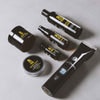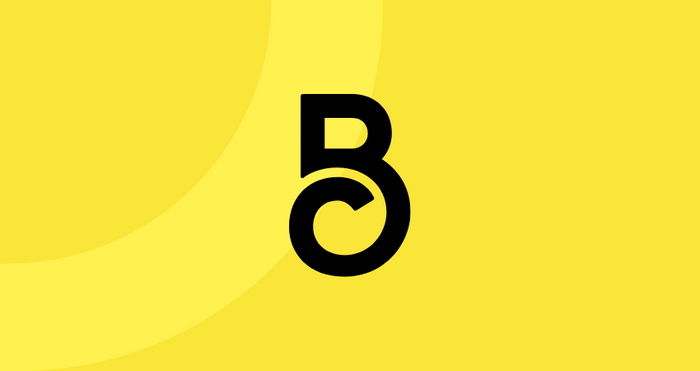7 Science-Based Reasons Why You Can't Grow a Beard
It’s easy to feel a little insecure when you look around and see so many dudes rocking full-face beards. Meanwhile, you’re barely able to get anything more than stubble. While it might feel like you’re somehow doing something wrong, it could just be science.
Let’s review the scientific reasons why you might not be able to grow some hair, as well as some ways you may be able to stimulate hair growth to get a better-looking beard.
Beard Growth Misconceptions
Before we talk about real science, let’s talk about some fake science to quell some of those misnomers you’ve probably already heard. Let’s get the big one out of the way — shaving does not make your hair grow back even thicker.
Shaving Doesn’t Affect Your Hair
Shaving has no effect on the root of your hair beneath the skin and doesn’t affect the way your hair grows. It might make the hair feel a bit stubbly and coarse for a while, and it might even appear a bit darker for a period of time as it grows in.
It’s Not All About Testosterone
Some people look at a dude with a thick beard and think that he has more testosterone, which is the major sex hormone in men that plays roles in many bodily processes, including the appearance of facial hair. While it can play a role in hair growth, it doesn’t have an effect on how thick or sparse your beard hair looks. So you might be loaded with testosterone and still have a patchy beard.
It’s all to say: There’s no magic pill you can take to make your facial hair grow exactly how you want it. Let’s dig into the real science behind what could be causing your facial hair to look a little less perfect than you’d like.
7 Signs You Can’t Grow a Beard
Your hair might not be growing for a lot of different reasons, including some of these science-backed explanations.
1. Genetics
The thickness and fullness of your beard is primarily determined by your genetics. Basically, if your father and grandparents have thick beards, there’s a really good chance you’re going to have a thick beard too.
Men have a hormone in their body called androgen, which is responsible for facial hair growth and a deep voice, among other common “masculine” traits. There’s also an enzyme in the body that converts testosterone (an androgen hormone) into another one called DHT, or dihydrotestosterone.
When DHT binds to the receptors on your hair follicles, it stimulates the growth of facial hair. But your genetics determine how sensitive your follicles actually are to DHT in the first place. So if your dad didn’t have sensitive follicles, then you probably won’t be able to grow a hefty beard.
That’s a lot of chemistry talk, but to make a long story short, if your dad and grandfather both couldn’t grow a beard, you probably won’t either. The opposite is also true: if your grandfather was Abraham Lincoln and your Dad was Gandalf, then you’re probably going to have a luscious beard (and some explaining to do).
2. Ethnicity
Your ability to grow a massive beard might also have something to do with your genetics in a different way: your ethnic background. Studies on facial hair growth by country reported that Chinese men generally have less facial hair compared to Caucasian men, with men from Mediterranean countries having the most facial hair overall.
It also seems like the location of hair on the face varies by ethnicity, with Chinese men having facial hair that concentrates around the mouth, while Caucasian men have more hair on the neck, chin, and cheeks.
3. Age
Your hair is likely to get thicker with age. As a teenager, you’re not likely to have a lot of facial hair growth, but it tends to increase until around age 30. Unlike the hair on the top of your head, your facial hair doesn’t usually stop growing, so you can enjoy your beard until the very end of time, even if your head starts to shine.
4. Alopecia Areata
Alopecia areata, often referred to as simply alopecia, is a condition in which the immune system attacks its own hair follicles. The result is hair loss which can be extensive, and it can occur on all parts of the body.
It’s not known exactly what causes this condition, and the severity of alopecia can vary from person to person. Both men and women can get it, though you have a higher risk of getting it if you have a close family member with this disease. Onset can occur at any age, though it is most common before the age of 30.
Alopecia usually starts with the sudden loss of round or oval patches on the scalp, but it can also affect the beard as well as eyebrows and lashes. There’s usually no rash or redness – just hair loss.
Sometimes, the hair can grow back naturally and evenly. But for others, additional patches might continue to develop, and hair may be lost from the entire scalp. This is rare and known as alopecia totalis. People with alopecia also sometimes notice changes to their nails, such as ridges or pits in their fingernails and toenails.
5. Testosterone
While testosterone levels won’t change the patchiness, or lack thereof, on your beard, it can affect its ability to grow how you want it to. People with super low levels of testosterone likely have little to no facial hair whatsoever.
With that said, unless your testosterone is clinically low, it probably isn’t affecting your hair growth. Low testosterone can be accompanied by erectile dysfunction, fatigue, and trouble building muscle.
6. Diet and Exercise
For some men, it’s not necessarily that they can’t grow a beard but rather that the beard is not growing healthily. This can make it look coarse, patchy, and dry. Much of this might be due to lifestyle habits like diet and exercise.
One of the key components for healthy hair is lean protein, which you want to get from your diet. You can up your protein intake by incorporating more foods like beans, chicken, fish, beef, and tree nuts into your diet.
As far as exercise, it can help stave off stress hormones which can otherwise reduce the quality of the hair on your head and face. Strength training can also increase testosterone levels for a brief period, which can be helpful for people with extremely low levels that make it impossible to grow a beard.
7. Stress
Feeling so stressed that you want to pull your hair out is one thing, but being so stressed that your hair just stops growing completely is another. Stress and hair loss can be related.
Telogen effluvium is a condition in which significant stress pushes hair follicles into a resting phase. Within a few months, these hairs might suddenly fall out or become detached from combing or washing. This can affect your beard hair as well as the hair on your head.
Not being able to grow out your beard can cause some stress, and being stressed can make your beard stop growing. It’s a tough cycle to break, but it can start with you. Don’t sweat the small stuff, and know that you can still look like an amazing, handsome man even if your beard isn’t exactly how you want it to look.
Ways To Stimulate Beard Growth
If you’re having some trouble growing a beard, hope isn’t lost. In fact, even if you are able to grow a beard, use these tips to help you grow your beard faster by amplifying its health, so it looks better than ever.
Amp Up That Skincare Routine
Skincare isn’t just something that TikTok influencers record videos about — it’s something that men should make a priority to improve their overall health. Men’s skin care can have a direct effect on beard growth.
Dry skin or dirty skin can clog your pores, which leads to ingrown hair and irritated skin. Not only does that affect hair growth, but it also just makes your beard feel super itchy and uncomfortable to the point where you’ll probably want to shave it off anyway. Finding a solid facial cleanser can go a long way.
On top of your skincare routine should be a beard care routine rounded out by our Beard Growth Kit. It has everything you need to grow and maintain your beard exactly how you want it. Beard Accelerators go beyond your daily skincare routine to give your beard that Rocky-style workout it’s been craving.
Eat Healthy
Your diet can affect your hair and skin health, so be sure to load up on protein, eat lots of fruits and veggies, and try to get essential vitamins and nutrients. If you need a little vitamin boost, we’ve got you covered with our beard growth vitamins that are made with Biotin, Vitamin A, Vitamin B6, and more to boost facial hair growth and thicken your beard.
Avoid Smoking
Smoking is bad for your teeth, bad for your lungs, bad for your hair, and bad for you all around. Avoiding it is the best choice, but if you do decide to engage, try to lower your consumption to try to improve the appearance of your beard.
In Conclusion
Not being able to grow a beard is a hard feeling to grapple with, but there might be some science-based reasons for it. Genetics is usually the main reason, but it might also have to do with age, ethnicity, testosterone, underlying conditions like alopecia, diet, exercise, or stress.
But you can try to make your beard even more full and thick with healthy habits like diet and exercise, as well as healthy beard care routines. Join the Beard Club and take 15% off (plus a free item) when you take our personalized beard quiz and get your personalized beard care plan.
Sources:
Does shaved hair grow back thicker? | The Mayo Clinic
Testosterone — What It Does And Doesn't Do | Harvard Health
Hormonal Effects on Hair Follicles | PMC
Telogen Effluvium: Symptoms, Causes, Treatment & Regrowth | Cleveland Clinic




